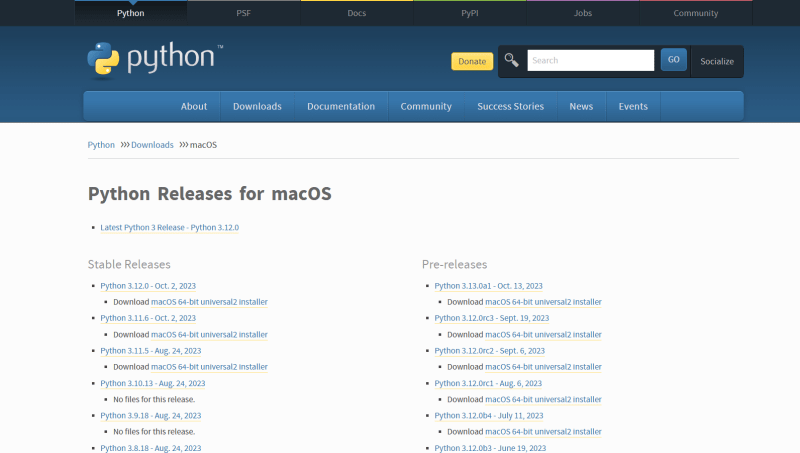Python, a versatile and powerful programming language, has gained immense popularity for its simplicity and readability. If you're eager to embark on your programming journey and harness the capabilities of Python, the first step is to download and install the language on your system. In this blog post, we'll guide you through the process of downloading Python, whether you're using Windows, macOS, or Linux.
Step 1: Determine Your Operating System
Before you begin, identify the operating system of your computer. Python is compatible with Windows, macOS, and Linux, and each platform has its own installation process.
For Windows Users:
Step 2: Visit the Python Website
Open your web browser and navigate to the official Python website at https://www.python.org/. On the homepage, locate the "Downloads" tab.
Step 3: Choose the Python Version
You'll find two major Python versions: Python 2 and Python 3. As of this writing, Python 3 is the recommended version, as Python 2 is no longer supported. Click on the "View the full list of downloads" link under the Python 3 section.
Step 4: Download the Installer
Scroll down to the bottom of the page and select the installer that matches your system architecture (either 32-bit or 64-bit). Click on the installer link to start the download.
Step 5: Run the Installer
Once the download is complete, locate the installer file and run it. Follow the on-screen instructions, ensuring that you check the box that says "Add Python to PATH" during the installation process. This simplifies the process of running Python commands from the command line.
Step 6: Verify the Installation
Open a command prompt and type python --version to verify that Python has been successfully installed. You should see the version number, indicating that Python is now accessible from the command line.
For macOS Users:
Step 2: Visit the Python Website
Visit https://www.python.org/ and navigate to the "Downloads" tab.
Step 3: Choose the Python Version
Select the "View the full list of downloads" link under the Python 3 section.
Step 4: Download the Installer
Download the macOS installer, which typically has a .pkg extension.
Step 5: Run the Installer
Locate the installer file and run it. Follow the on-screen instructions to complete the installation.
Step 6: Verify the Installation
Open the terminal and type python3 --version to confirm that Python has been installed successfully.
Alternative Method: Using Homebrew for Python Installation:
Step 7: Install Homebrew (if not already installed)
If you don't have Homebrew installed on your macOS, you can do so by opening Terminal and running the following command:
/bin/bash -c "$(curl -fsSL https://raw.githubusercontent.com/Homebrew/install/HEAD/install.sh)"
Follow the on-screen instructions to complete the installation.
Step 8: Update Homebrew
Ensure Homebrew is up to date by running:
brew update
Step 9: Install Python with Homebrew
Now, you can install Python using Homebrew with the following command:
brew install python
Homebrew will download and install the latest version of Python available.
Step 10: Verify Homebrew Python Installation
Check if Python was installed successfully by running:
python3 --version
This should display the version number of the Python installation managed by Homebrew.
For Linux Users:
Step 2: Use the Package Manager
Many Linux distributions come with Python pre-installed. However, if you need to install it manually, use your distribution's package manager. For example, on Ubuntu, you can use the following command:
sudo apt-get update
sudo apt-get install python3
Step 3: Verify the Installation
Open a terminal and type python3 --version to ensure that Python is installed.
Congratulations! You've successfully downloaded and installed Python on your system. With Python at your fingertips, you're ready to dive into the world of programming, whether you're interested in web development, data analysis, machine learning, or any other exciting field. Stay tuned for more tutorials as you embark on your coding adventure!
Happy Coding!!










Top comments (2)
Nice article! Might be worth mentioning homebrew as an option for macOS
Thank you for your amazing suggestion!